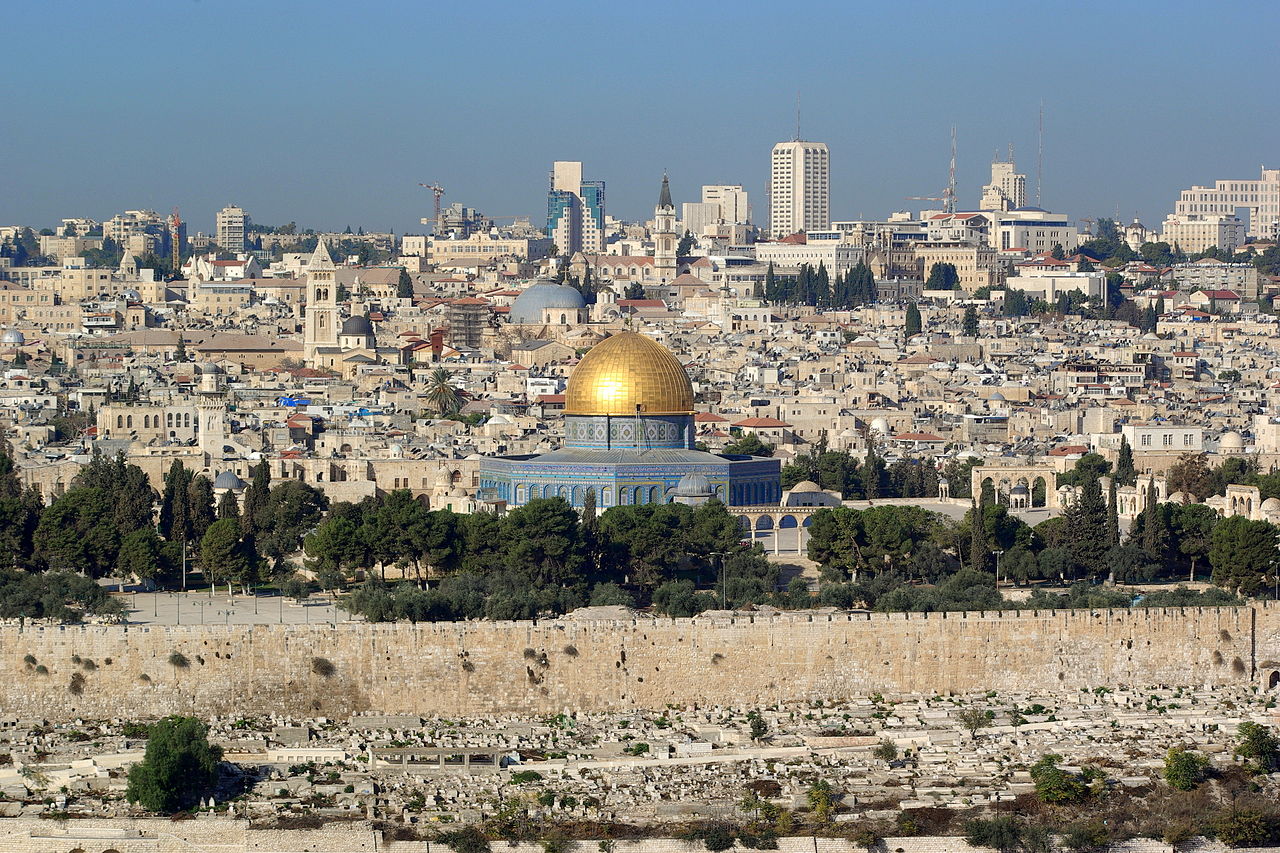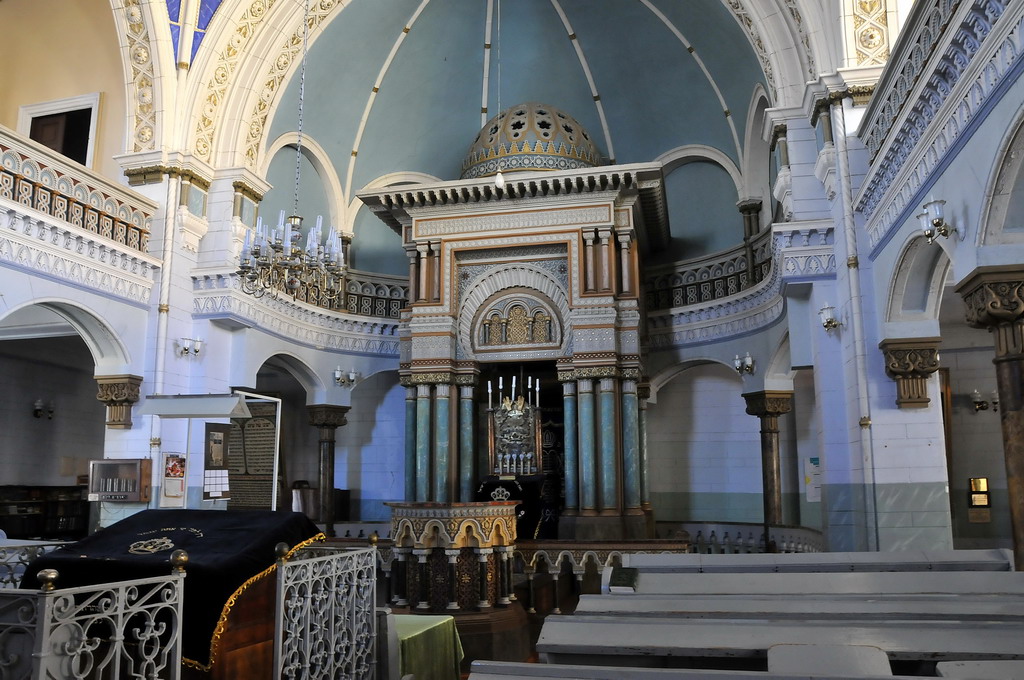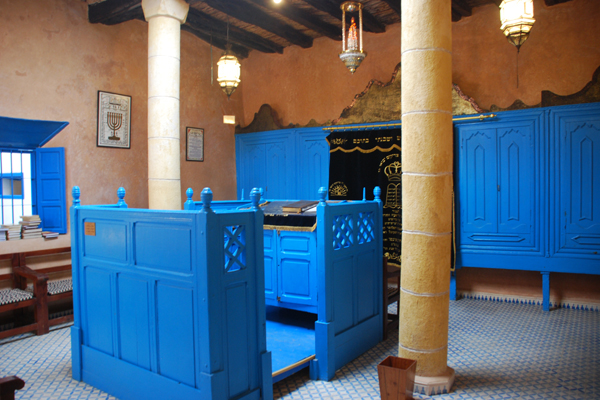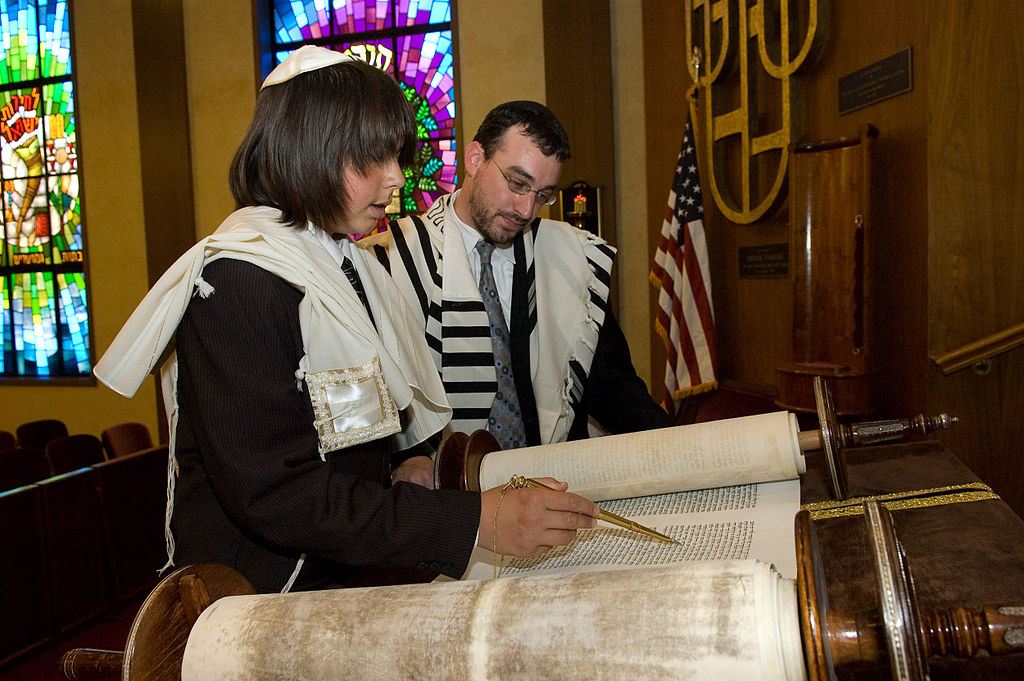2. The Temple and the synagogues
Nowadays the synagogue stands as the centre of Jewish religious life. In the past this has not always been the case.
A model of the Tabernacle
The first shrine of Judaism is a mobile sanctuary, the mishkan (home), built after the Exodus from Egypt and also called “tabernacle”. Its description in the Book of Exodus included enough explanations for other tabernacles to be built later on.

Wikimedia Commons Usable under the conditions of the
GNU Free Documentation License:
Licensed under the : Creative Commons Attribution-Share Alike 3.0 License
Image under the URL:
http://commons.wikimedia.org/wiki/File:Stiftshuette_Modell_Timnapark.jpg
(Retrieved 27 February 2015)
A model of the Temple in Jerusalem at the time of Herod the Great
After the return of Jews in Judea, a second Temple was built in Jerusalem in the sixth century BC. Five centuries later, in the first century BC, Herod the Great started overseeing huge works for its expansion and embellishment. We see on the left the first steps of the staircase going from the city to the Temple, and on the right the four towers of the Antonia fortress built by Herod the Great.

Wikimedia Commons Usable under the conditions of the
GNU Free Documentation License:
Licensed under the : Creative Commons Attribution-Share Alike 3.0 License
Image under the URL:
http://commons.wikimedia.org/wiki/File:Second_Temple_view.jpg
(Retrieved 27 February 2015)
The Temple Mount today
We don’t know much about the history of the Temple Mount (Har ha-Beit) during the period going from the repression of the Bar Kokhka revolt to the conquest of Jerusalem by the Muslim Caliphate in 638. For Muslims, the Temple Mount was considered the place of the “farthest mosque” (al-Masjid al-Aqsa) mentioned in the Night Journey of Muhammad. [See Islam module II section 7.] In 691, the Caliph Abd al-Malik oversaw the construction of an octagonal building surrounding the rock from which Muhammad is believed to have ascended to Heaven, and named it the Dome of the Rock (Qubbat as-Sakhrah). In 715, the Caliph al-Walid used neighbouring buildings to build a mosque called al-Masjid al-Aqsa.

Wikimedia Commons Usable under the conditions of the
GNU Free Documentation License:
Licensed under the : Creative Commons Attribution-Share Alike 3.0 License
Image under the URL:
http://commons.wikimedia.org/wiki/File:Jerusalem_Dome_of_the_rock_BW_14.jpg
(Retrieved 27 February 2015)
The Temple Mount today
The choir synagogue of Vilnius, Lithuania, was built in 1903. It is named from the chorals that are sung during the rituals. After being used as a drug warehouse in the German occupation and a metallurgical plant in the Soviet period, it was given back to the local Jewish community in 1990. This synagogue is the only one remaining from the hundreds of synagogues existing before the Holocaust.

Wikimedia Commons Usable under the conditions of the
GNU Free Documentation License:
Licensed under the Creative Commons Attribution 2.0 Generic License:
Image under the URL:
http://commons.wikimedia.org/wiki/File:%27Choral_Synagogue%27_Vilnius_-_Flickr_-_FaceMePLS.jpg
(Retrieved 27 February 2015)
The synagogue of Essaouira, Morocco
The Essaouira synagogue is one of the latest ones in the city of Essaouira, Morocco, showing both the importance of the Moroccan Jewish community and the way the building is adapted to local use.

Wikimedia Commons Usable under the conditions of the
GNU Free Documentation License:
Licensed under the Creative Commons Attribution 2.0 Generic License:
Image under the URL:
http://commons.wikimedia.org/wiki/...synagogues_in_Essaouira.jpg
(Retrieved 27 February 2015)
A young American Jew on the day of his bar-mitsva
For the 13-year-old boy - and the 12-year-old girl in liberal and “conservative” Jewish communities -, the public reading of the Torah and a drasha (text commentary) in the synagogue is the sign of their entry into the adulthood. They become bar mitzvah (son or daughter of the commandment), i.e. religiously responsible for their actions.

Wikimedia Commons Usable under the conditions of the
GNU Free Documentation License:
Licensed under the Creative Commons Attribution 2.0 Generic License:
Image under the URL:
http://commons.wikimedia.org/wiki/File:Michael%27s_Bar_Mitzvah_2.jpg
(Retrieved 27 February 2015)






